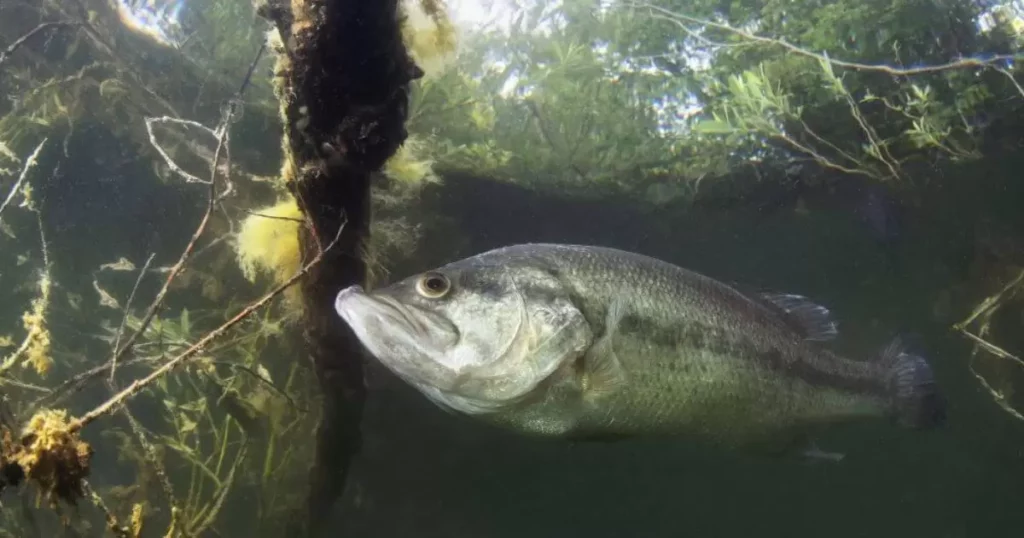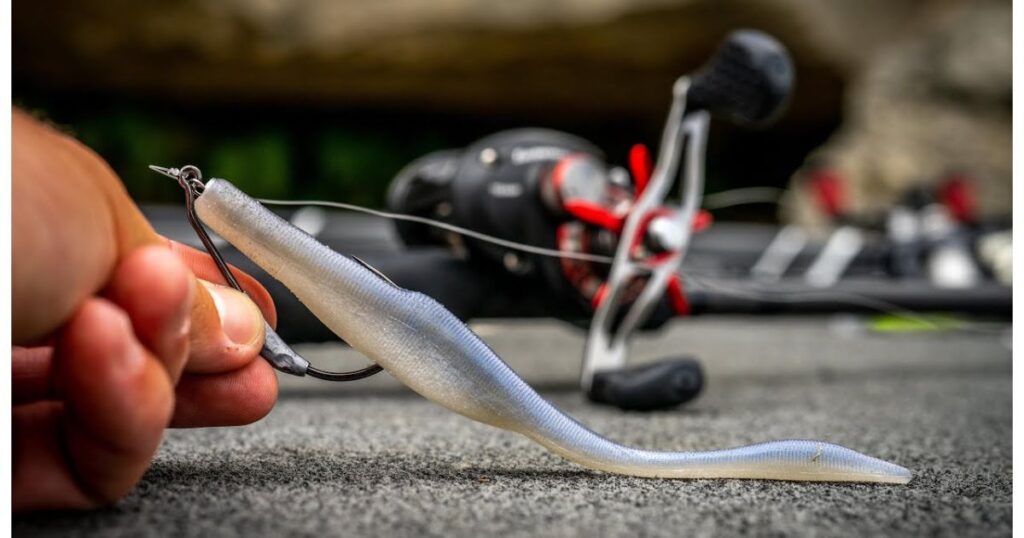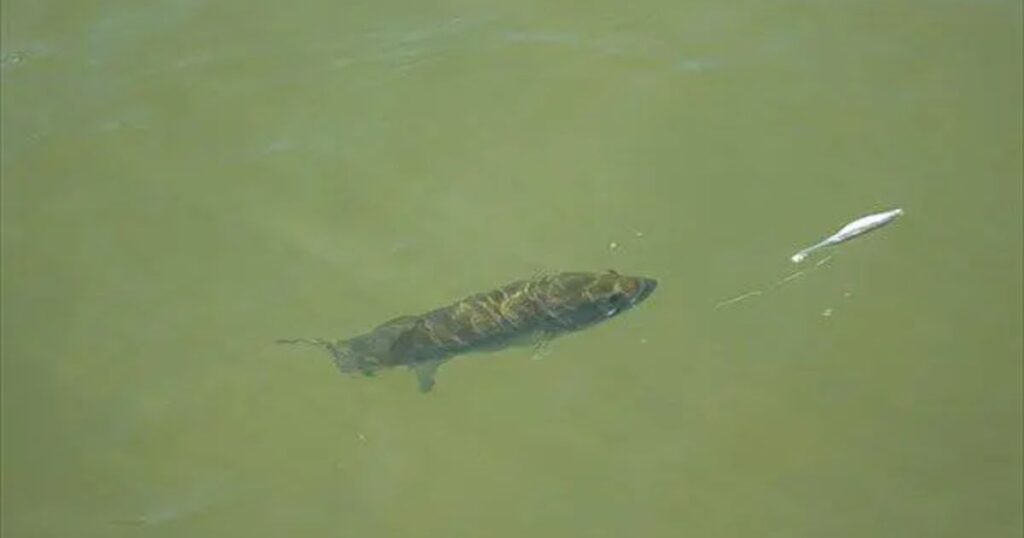Fluke fishing for bass involves using a soft plastic bait, commonly known as a fluke, to lure bass. These baits mimic the appearance of baitfish and are often rigged weightless or with a light jig head. Anglers use the fluke’s lifelike action to attract bass, making it a popular choice for both experienced and novice fishermen.
When to fish a fluke for bass? Timing is crucial in maximizing success. Understanding the best conditions and seasons for using a fluke can significantly increase your chances of a fruitful bass fishing expedition. The answer lies in the water temperature, weather patterns, and the behavior of bass during different times of the year.
Fishing a fluke for bass can be most effective during the post-spawn and throughout the summer when bass are more actively feeding near the water’s surface. The fluke’s versatile nature allows it to be effective in various situations, such as targeting bass in shallow waters, around cover like docks or vegetation, or even when bass are feeding on smaller baitfish. Mastering the art of working a fluke can lead to an enjoyable and rewarding bass fishing experience.
Bass Behavior in Fluke Fishing

Understanding bass behavior is key in fluke fishing. Bass often lurk in sandy or muddy bottoms, seeking baitfish, which makes the fluke an enticing target due to its natural movement and appearance. During the warmer months, bass tend to move closer to the shallows, while in cooler seasons, they might retreat to deeper waters. Observing their feeding patterns and locations helps in targeting these prized catches. In fluke fishing, mimicking the erratic movement of baitfish can trigger the bass’s predatory instincts, making the fluke an effective lure due to its realistic action.
Seasonal Insights for Fluke Fishing Bass

Seasonal changes greatly impact bass behavior in fluke fishing. In spring, as waters warm, bass become more active, moving into shallower areas. This season often calls for slower presentations and targeting shallower waters with flukes. In summer, as the water heats up, bass might retreat to deeper, cooler areas, so adjusting the fishing depth can be crucial. Fall marks a time when bass feed voraciously to fatten up before winter, making them more likely to aggressively strike a well-presented fluke. Winter demands a slower and more patient approach, as bass activity slows down in colder waters, requiring a more subtle and precise presentation of the lure.
| Season | Characteristics | Fishing Approach |
| Spring | Warmer waters, shallow | Slow presentations in shallower areas. |
| Summer | Hotter, bass in deeper areas | Adjust depth, target cooler, deeper waters. |
| Fall | Bass feeding aggressively | Use well-presented flukes to capitalize on their feeding frenzy. |
| Winter | Colder, slower bass activity | Employ a patient, subtle presentation in colder waters. |
Tactics and Techniques in Fluke Fishing for Bass

Fluke fishing for bass demands various tactics and techniques. One effective method is the weightless Texas rig, allowing the fluke to fall naturally and imitate injured baitfish. Twitching the rod tip imparts a lifelike action to the fluke, enticing bass to strike. Another technique involves using jig heads with a weighted hook, enabling anglers to fish deeper waters effectively. Working the fluke with short, sharp twitches mimics the movements of prey, often triggering aggressive strikes. Moreover, employing a stop-and-go retrieve, alternating between quick movements and pauses, can entice hesitant bass. Adapting the presentation style to the prevailing conditions, such as water clarity and temperature, is essential in maximizing success in fluke fishing for bass.
Water Conditions and Fluke Fishing

Fluke fishing success greatly hinges on water conditions. Optimal conditions for catching fluke, also known as summer flounder, involve water temperatures between 50°F and 70°F. They thrive in sandy or muddy bottoms, making estuaries, bays, and coastal areas prime spots for reeling them in. When the water’s clear and calm, using bucktails, squid strips, or spearing as bait can attract fluke. However, during murky or rough conditions, switching to brightly colored jigs or rigs with scented baits might yield better results. Adapting to varied water conditions is key for a rewarding fluke fishing experience.
Fluke Fishing in Different Environments for Bass
Bass fishing with fluke as bait offers diverse opportunities in various environments. In freshwater lakes and ponds, bass are enticed by the erratic movements of fluke lures, especially in weedy areas where bass seek cover. Coastal saltwater areas also present prime fluke fishing spots for bass. The open waters, estuaries, and nearshore zones hold abundant bass populations, attracted to the fluke’s lifelike action. Adjusting the rig and retrieval techniques according to the specific environment, whether freshwater or saltwater, is crucial for a successful bass fluke fishing adventure.
Challenges and Solutions in Fluke Fishing for Bass

Fluke fishing for bass presents challenges, notably in the form of changing weather conditions. Sudden shifts in weather can affect water temperature and clarity, impacting the bass’s behavior. To tackle this, maintaining versatility in bait selection and fishing strategies is vital. The presence of natural predators or competition in the fishing area poses a challenge. Employing techniques like drifting with the current or using a variety of bait presentations helps overcome these challenges, increasing the chances of a fruitful bass fluke fishing excursion. Adapting to the unpredictable nature of the fishing environment is key to finding solutions that lead to a rewarding catch.
FAQs
What are the best water conditions for fluke fishing?
Optimal water temperatures range from 50°F to 70°F, favoring sandy or muddy bottoms in estuaries, bays, and coastal areas.
Where can I find bass for fluke fishing?
Bass can be found in freshwater lakes, weedy areas, and coastal saltwater zones, drawn to the lifelike action of fluke lures.
How do changing weather conditions affect bass fluke fishing?
Sudden weather shifts impact water temperature and clarity, influencing bass behavior and requiring adaptable fishing strategies.
What are the key challenges in fluke fishing for bass?
Adapting to changing weather and dealing with natural predators or competition pose significant challenges in bass fluke fishing.
How can I enhance my success in bass fluke fishing?
Maintaining versatility in bait selection and fishing techniques, such as drifting with the current, aids in overcoming challenges and increasing chances of a successful catch.
Conclusion
Understanding the nuances of water conditions and the diverse environments where bass thrive during fluke fishing is key to a successful angling experience. By grasping the impact of water temperature, clarity, and the nature of the fishing ground, anglers can adapt their tactics, using appropriate bait and techniques. Adapting to changing weather, competition, and the behavior of the bass demands flexibility and a willingness to experiment with different approaches. By remaining versatile and embracing the challenges, anglers increase their chances of reeling in a rewarding catch.
Ultimately, the thrill of bass fluke fishing lies in the dynamic interaction between the angler, the environment, and the elusive bass. It’s not merely about the catch, but the continual learning process, the adjustments made, and the joy of mastering the ever-changing conditions of the waters. Through patience, adaptability, and a deep understanding of the interplay between environment and technique, anglers can find immense satisfaction in the pursuit of bass through fluke fishing.

